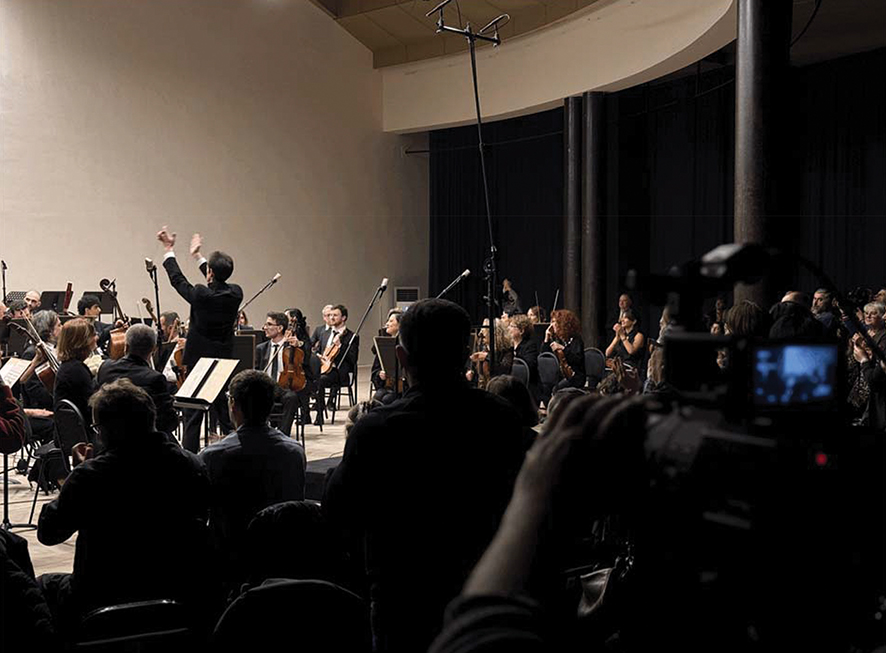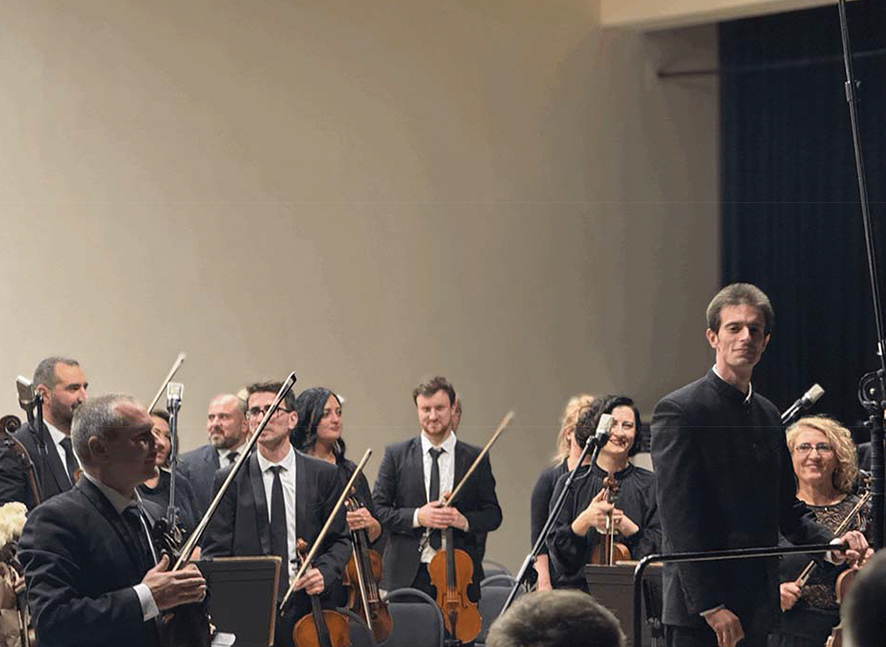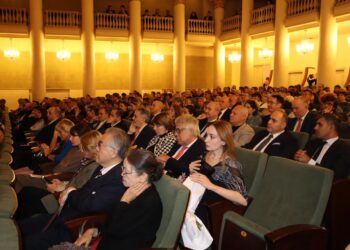On October 25th, the Georgian Philharmonic Orchestra inaugurated the Georgian Philharmonic Orchestra Auditorium in Tbilisi with a performance that was, in itself, a quiet exploration of the hall’s potential. Conducted by Temur Kvitelashvili Junior, the program wove together Elgar’s ceremonious marches, Ravel’s atmospheric sensuality, and Beethoven’s resolute rhythmic energy. The concert opened a new page for classical music in Tbilisi, casting this hall as a venue that could foster both intimate and ambitious musical experiences for the city.
Elgar’s Pomp and Circumstance: The Quietly Regal Opening
The evening began with Edward Elgar’s Pomp and Circumstance March No. 1, a piece traditionally associated with celebration, here delivered with a subtly dignified tone. Kvitelashvili directed with attention to structure and balance, allowing Elgar’s themes to unfold with clarity rather than ceremony.
The familiar melody, often presented as an anthem of grandeur, was executed here with restraint, allowing space for its more reflective qualities to come through. The orchestra responded to Kvitelashvili’s nuanced direction with a well-blended sound, providing a steady introduction to the evening’s program.

The Colorful Hues of Ravel’s Daphnis et Chloé
Following Elgar’s march, the orchestra shifted into Ravel’s Daphnis et Chloé, Suite No. 2, evoking a sense of dawn’s quiet mystery. Kvitelashvili led the ensemble with a particular focus on Ravel’s rich textures, guiding each section of the orchestra with precision. The suite’s opening, Lever du jour, conveyed a muted, almost hazy light, capturing the impressionistic quality of Ravel’s writing. Woodwinds, strings, and subtle brass interjections melded seamlessly, creating a tonal palette that invited close listening.
In the final section, Danse générale, the conductor coaxed out a reserved yet lively energy, allowing the rhythmic layers to build with natural momentum. Rather than aiming for a jubilant finale, Kvitelashvili held the intensity in check, resulting in a restrained conclusion that left a lingering sense of Ravel’s delicate balance between exuberance and introspection.
Beethoven’s Symphony No. 7: An Analytical Approach to Rhythmic Vitality
The evening’s culminating work, Beethoven’s Symphony No. 7, brought with it an analytical perspective on Beethoven’s characteristic rhythmic drive. Kvitelashvili’s interpretation avoided indulgence, emphasizing structure and form over sheer force. The symphony’s introductory movement unfolded with steady confidence, and Kvitelashvili’s pacing provided a foundation that allowed the orchestra’s musicians to engage with Beethoven’s spirited motifs with careful control.
The Allegretto, perhaps the symphony’s most introspective moment, was played with measured sensitivity. The movement’s persistent rhythmic pulse, almost meditative in its effect, was maintained with deliberate focus. Rather than drawing the audience’s attention to the movement’s more dramatic qualities, Kvitelashvili emphasized its subtle textures, creating an atmosphere that felt both thoughtful and spacious.
In the symphony’s final movements, Kvitelashvili guided the orchestra through Beethoven’s energetic demands with precision, opting for a controlled, forward-moving tempo. While some might have wished for a more overtly vigorous interpretation, the conductor’s approach allowed Beethoven’s compositional structure to take precedence, highlighting the architecture of each movement. The evening concluded on a note that was strong but understated, leaving a reflective sense of Beethoven’s musical intentions.

A Concert of Quiet Precision and Measured Energy
This inaugural performance marked a restrained yet meaningful beginning for the Georgian Philharmonic Orchestra Auditorium. Temur Kvitelashvili Junior’s measured approach brought cohesion to a program that balanced ceremony, color, and rhythm. Each work was presented with a tone of quiet precision, more reflective than rousing. In this new concert space, the orchestra explored the range of acoustic possibilities without forcing resonance, allowing the natural attributes of the venue to inform the evening’s sound.
For Tbilisi, the concert presented another introduction to a space where music can be explored with focus and clarity. This hall has potential to become a respected fixture in the cultural landscape, offering a setting in which classical music can be experienced as much for its subtlety as for its power.
By Ivan Nechaev














